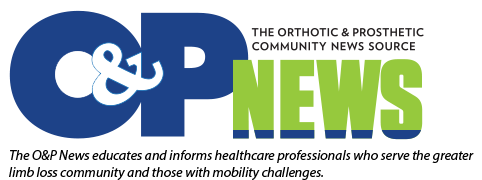Researchers found in-shoe embedded ultrasound to be a reliable method to study plantar soft tissues during gait, while the use of a contoured heel cup reduced the compression of the mid portion of the heel pad, according to recent study results published in Gait & Posture.
“Getting accurate information about how the soft tissues of the foot, particularly the heel pad, behave during dynamic tasks like walking is difficult. It has been suggested the properties of these tissues can change as a result of disease or musculoskeletal problems and being able to see how they deform under the loads applied during gait and other weight-bearing activities could help us to understand these processes better,” Scott Telfer, EngD MIMechE CEng, of the Institute for Applied Health Research from Glasgow Caledonian University, Scotland, told O&P Business News. “We designed orthotic inserts, a flat heel lift and a contoured heel cup, that allowed an ultrasound probe to be embedded within them. This meant we could image the heel pad during gait and see in real time how it was deforming.”
Heel cup measurements
Researchers recorded dynamic compression of the heel pads of 16 healthy participants during treadmill walking to demonstrate the feasibility of using orthotic heel inserts with an embedded ultrasound transducer and to compare the effects of a flat orthotic heel raise and a contoured heel cup insert on the behavior of the heel pad during gait. Researchers combined this data with plantar pressure measurements to estimate stiffness and energy dissipation ratio (EDR).
Overall, researchers found that both inter-session reliability of the ultrasound measurements and the inter-rater reliability were excellent. Study results also showed, when the heel cup insert was used, significant increases in the in-shoe unloaded and loaded thickness of the heel pad, as well as a 21% reduction in peak strain. Compared with the flat insert, the heel cup enabled a 39% reduction of peak pressures at the central portion of the heel pad and a 14% reduction for the overall heel. The secant modulus of the central portion of the heel pad was significantly reduced by the heel cup, according to study results. Researchers found no change in EDR.
“While study results were not hugely surprising, they did help us to understand how the heel pad functions during gait a bit better,” Telfer said. “We found it is possible to directly measure the heel pad during gait and orthotic inserts can exert a clear influence on how the pad compresses during gait.”
Future of clinical practice
According to Telfer, this proof of concept study shows it is possible to study the behavior of plantar tissues during gait, and helps practitioners understand the effects of heel cup-type orthotic inserts better.
Telfer said future studies should apply the approach used in their current study in patient groups, including those with diabetes and rheumatoid arthritis, so practitioners can begin to understand the effects of disease and injury on the tissue.
“Ultimately, the aim would be to use this type of data to help inform which type of intervention to prescribe, orthotic or otherwise,” Telfer said. “Additionally, developing the same type of set-up to study other anatomical locations on the foot, for example the distal metatarsal heads, would provide a fuller picture of how the tissues of the foot are behaving and a have a number of potential clinical applications.” — by Casey Murphy

